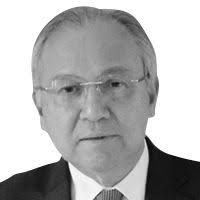Dallas: A chilling journey back in time

DALLAS, Texas – On my way to Houston to inaugurate our new Philippine consulate office, I stopped by Dallas to visit the Dealey Plaza Museum, also known as the Texas Depository Museum that serves as a repository of documents, records and artifacts pertaining to one of the most tragic events in US history: the assassination of President John F. Kennedy.
On Nov. 23, 1963 (Manila time), like most Saturday mornings, my mother would wake me up to drive her to the University of Santo Tomas in España Extension where she was the head of the Pathology department. But that Saturday was totally different from any other Saturday. It was only hours after President Kennedy had been shot in Dallas – a moment that has forever remained in my consciousness, stunned that the young and charismatic US president who has captured the hearts and minds of Americans had been taken so soon. My mother, a devout Catholic, told me to pray for the first US Catholic president.
It was that moment almost 56 years ago that gave me the compelling reason to finally visit Dallas, Texas. I was met by the museum assistant executive director who briefed me on the history of the museum located on the sixth floor of the old Texas Depository Building, now known as the Dallas Country Administration Building.
Ownership of the building passed to private individuals before it was purchased by the Dallas County government in 1977, and renamed as the Dallas County Administration Building in 1981. In 1989, the museum on the sixth floor was inaugurated, and it has since become the biggest attraction in Dallas with Americans and foreign tourists flocking to view the memorabilia that chronicles the life and the tragic death of an American icon on that fateful day of Nov. 22, 1963.
Kennedy had just come from the Fort Worth Chamber of Commerce where he delivered a speech, and was riding on an open limousine with his wife Jackie and Texas Governor John Connaly Jr. and his wife Idanell on the way to the Trade Mart where JFK was scheduled to speak. As the motorcade was going through Elm Street, shots were fired from the sixth floor of the Texas Depository Building, at the southeast corner window dubbed as the “sniper’s perch.”
It felt absolutely surreal to be right there and see the “X” on Elm Street that marked the spot where President Kennedy was fatally wounded. The “X” was briefly removed sometime in 2013 before the 50th anniversary of Kennedy’s assassination, but was returned a week later.
To this day, conspiracy theories surrounding the assassination continue to persist – from it being a Mafia hit to a plot by Cuba or the Soviet Union down to a federal government-backed takeover scheme. The Cuba and Soviet Union angle stemmed from documents showing Oswald – who served in the Marines – distributing Marxist leaflets, along with reports that he once defected to the Soviet Union but returned three years later in 1962 with his Russian wife.
Compounding the conspiracies was the killing of Oswald on Nov. 24, 1963 by Jack Ruby (born Jacob Rubenstein), a nightclub owner who, reports say, was seen meeting with Oswald before Kennedy’s assassination. As Oswald – in handcuffs following his arrest after Kennedy’s murder – was being led out of the basement of the Dallas Police headquarters on the way to the county jail where he will be transferred, Ruby approached and shot him at pointblank range.
The shocking event, and ensuing chaos, was fully captured on television – with Dallas Times-Herald photographer Bob Jackson immortalizing that moment when Ruby fired the pistol, Oswald’s grimace of pain and the surprised look of plainclothes policeman Jim Leavelle who was escorting Oswald.
It was a little uncanny to see memorabilia like the gray fedora hat worn by Ruby when he shot Oswald, the corner window at the sixth floor where the assassin must have waited for the presidential motorcade to pass, the Italian-made Mannlicher-Carcano rifle similar to the one found by investigators, and the scale model of the Dealey Plaza that was prepared by the FBI during the investigations conducted by the Warren Commission in 1964, because these are stark reminders of a sad legacy in America’s history. (See photos in This Week on PeopleAsia at the Allure section of the Philippine STAR next Sunday).
Another reason that prompted me to visit the museum was a very moving account in a book about the assassination. The book narrated that before midnight on Nov. 23, 1963, as Kennedy lay in repose at the East Room of the White House, his widow Jackie and brother Bobby wanted a private moment before receiving the many visitors expected to pay their last respects. It was the one and only time the coffin was allowed to be opened by Mrs. Kennedy. Both she and her brother-in-law Bobby began to weep, inconsolable in their grief. “Why now, God? Why?” Bobby wailed, unable to stop his sobbing that lasted for almost 40 minutes. The honor guard from the Army’s Special Forces – the Green Berets – couldn’t hold back their grief; they, too, started to cry in silence.
Whenever I visit the White House and walk past the East Room, I would always have this feeling of deep sadness, knowing that it was the scene of one of the most poignant and sorrowful moments in the history of the White House. What was supposed to be the era of “Camelot” ended in such a tragic way. To many people around the world, John F. Kennedy will never be forgotten – immortalized for many generations to come.
* * *
Email: [email protected]
- Latest
- Trending






















